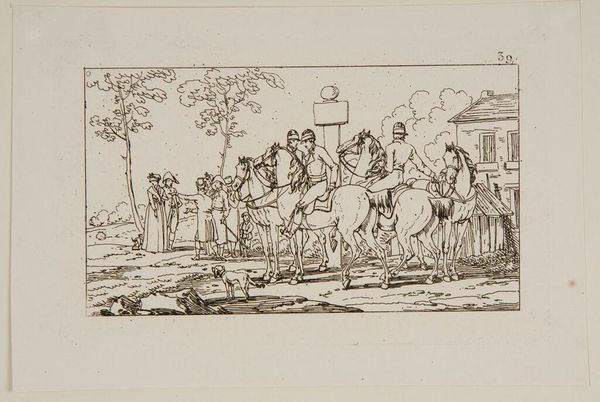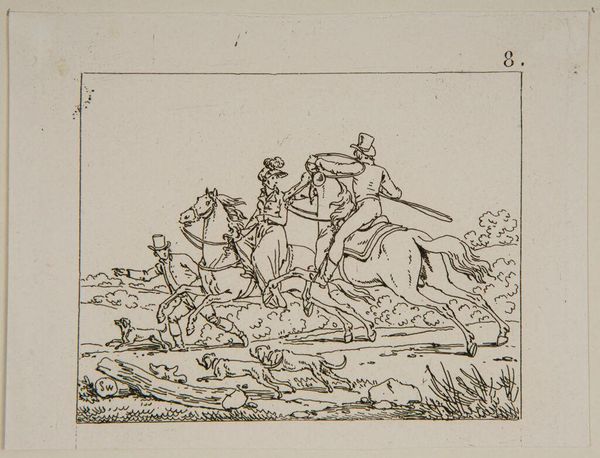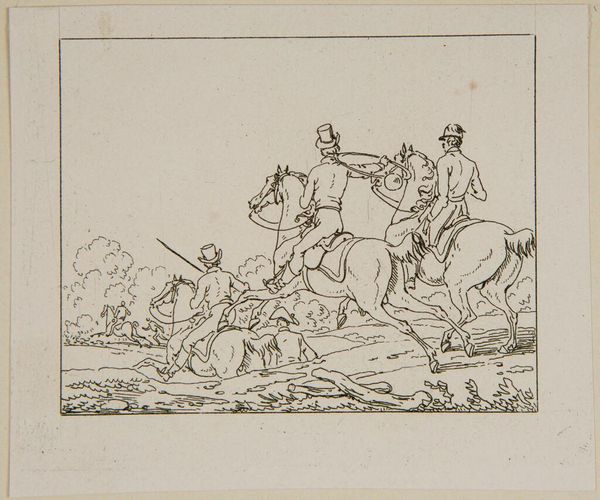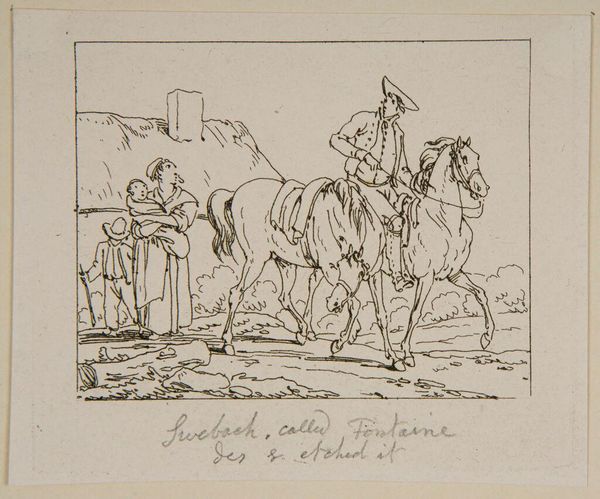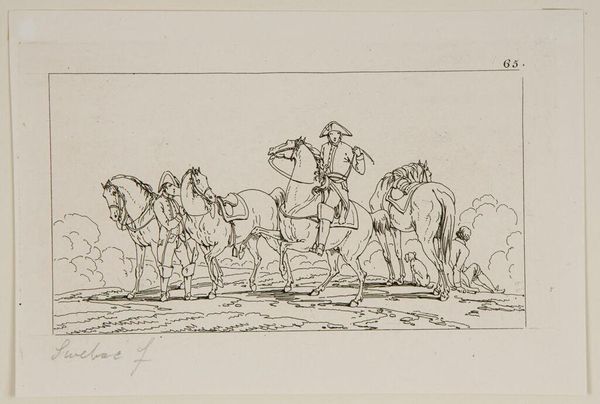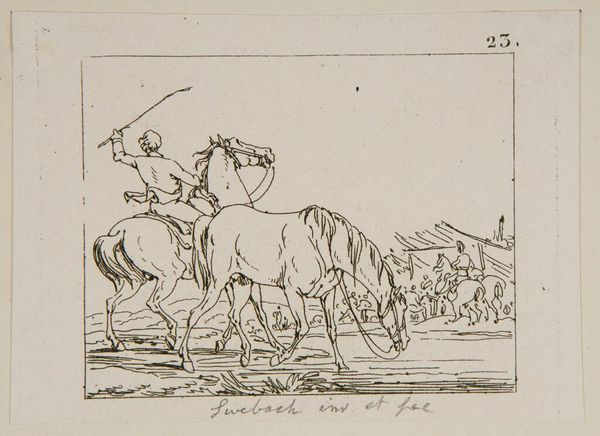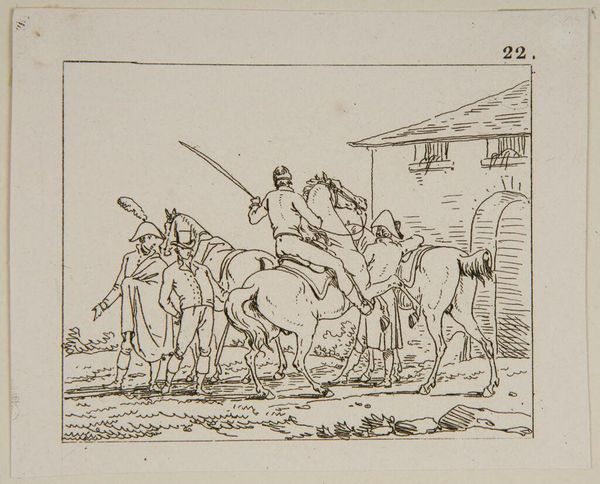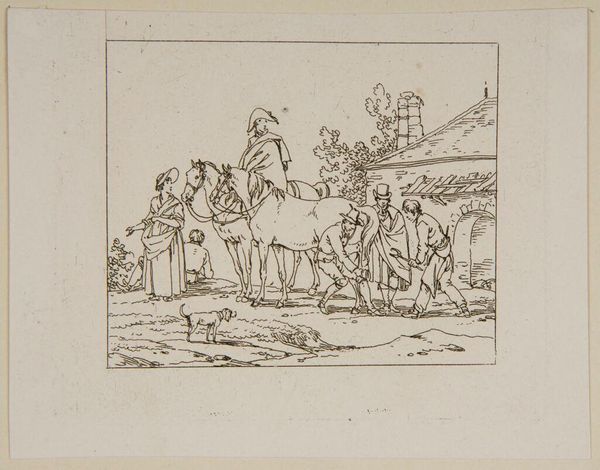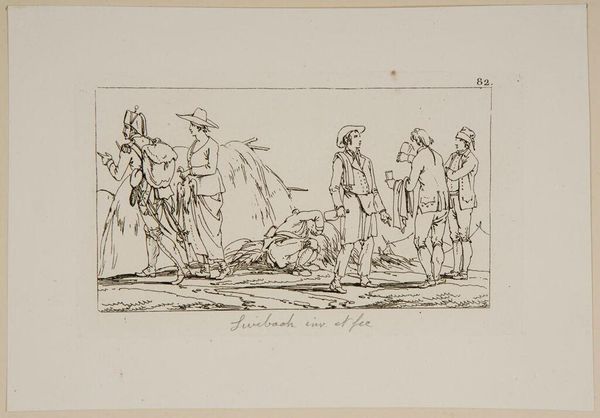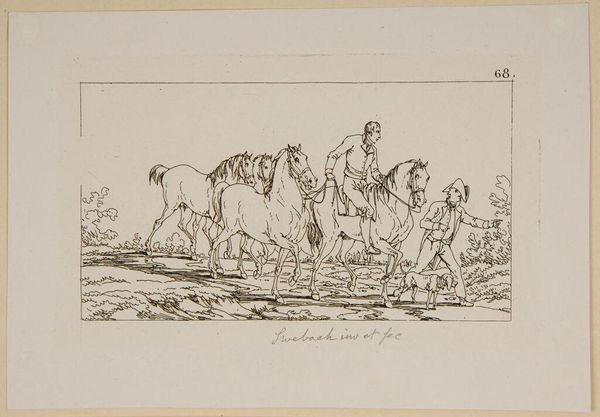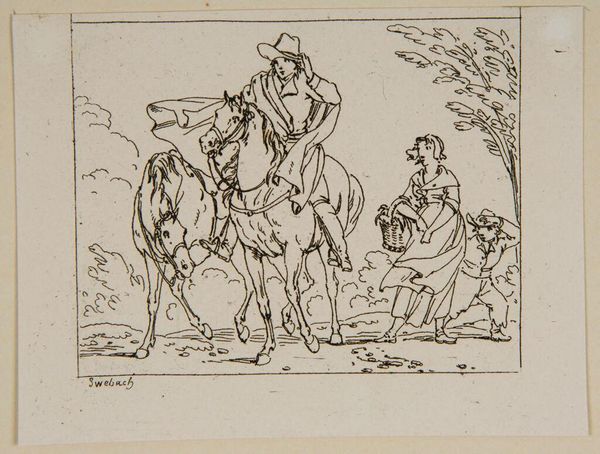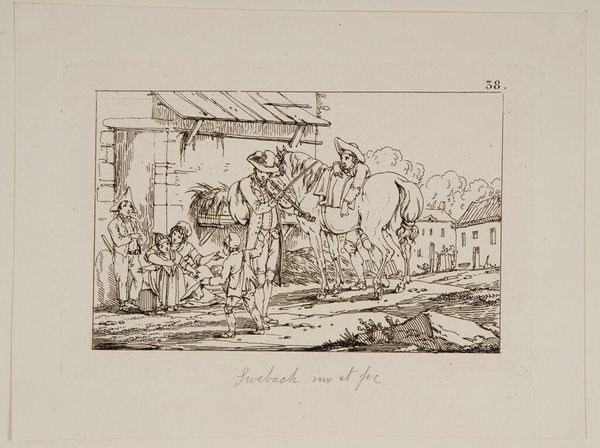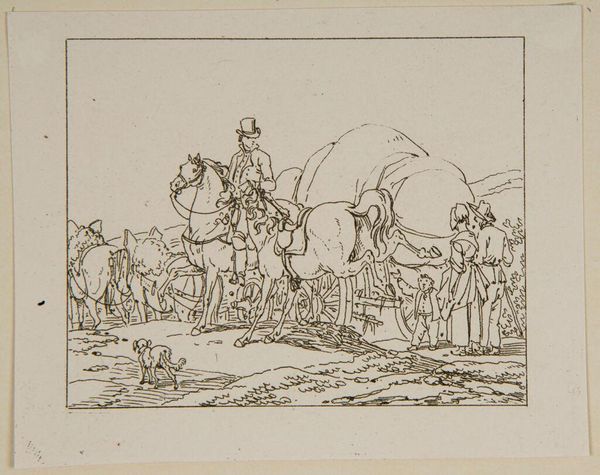
Copyright: CC0 1.0
Curator: Here we have Jacques-Francois-Joseph Swebach's "Plate XXII," a drawing from the Harvard Art Museums. The scene depicts figures on horseback in a landscape, rendered with delicate lines. Editor: Immediately, I notice the feeling of pastoral leisure, yet the figures on horseback imply privilege. The composition, with its delicate lines, speaks to a specific social class and their relationship to the land. Curator: The attire is indeed key. We see a rigid class structure reflected in the clothing of the figures. The people on horseback seem to hold a higher position than the figure on foot, perhaps revealing social dynamics of the time. Editor: Yes, even the horses can be interpreted as symbols of power. The image also evokes cultural memory of equestrian portraits, associating the riders with notions of nobility, mastery, and control. Curator: This resonates with current dialogues on power, class, and representation within art history itself. Considering Swebach's body of work, we see a recurring theme of capturing everyday life under aristocratic patronage. Editor: Examining the symbols in art like this allows us to tap into the collective unconscious. It also connects us to historical narratives that continue to shape our understanding of the world. Curator: Exactly, and this drawing invites us to critically examine the visual language of social hierarchy and its continuing legacy. Editor: It all seems to hint at a narrative far beyond a simple countryside scene.
Comments
No comments
Be the first to comment and join the conversation on the ultimate creative platform.
